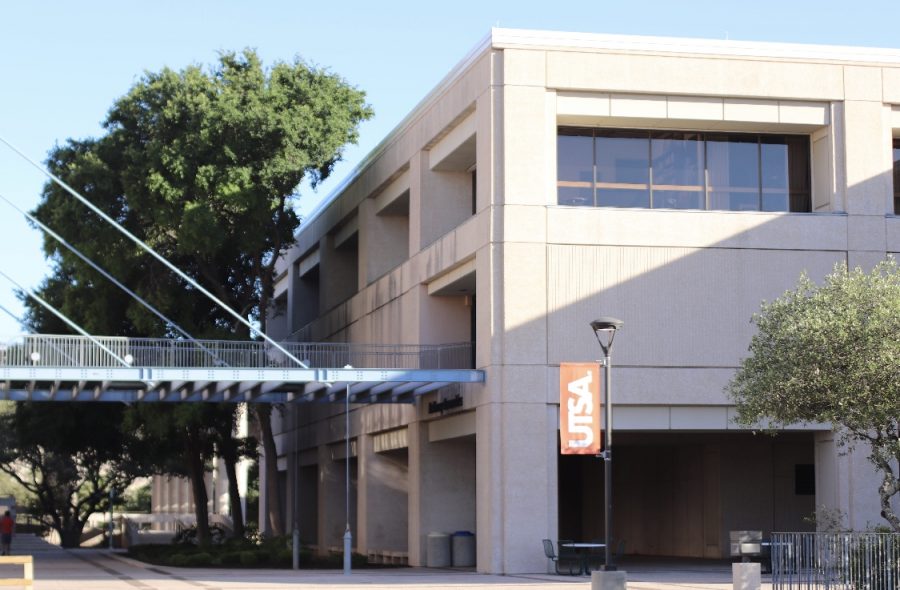UTSA COLFA matters, but our campus budget says otherwise
Photo by Ethan Gullett
April 13, 2020
A recent student report mentioned that a ceiling tile fell during a lecture in her class in the McKinney Humanities Building. The building, which houses most of the academic classes for the College of Liberal and Fine Arts, was built in 1974 and has not undergone a large-scale renovation since.
Students across disciplines have described what the building is like.
TaMarr Daniels, a senior studying public health, said, “The classrooms are very old. They do not make me feel welcome or make me feel like I am studying at a top-tier university.”
Another student, who wished to remain anonymous, said the building is completely uncomfortable. He stated, “I am a large man, and my body does not fit in those desks. I must get special support from the Student Disability Services to reserve a desk that will fit my body. I am just 6-feet tall! It is infuriating that I pay the same as everyone else at the university, yet all my classes are in this building where my journal can’t fit on my desk, and where all the classrooms have old chalkboards and falling ceilings.”
Students continually express how the university distributes funds to programs unfairly when comparing science and liberal arts programs.
According to the Office of Institutional Research, The College of Liberal and Fine Arts receives the lowest amount of funding per student at $2,346.47 whereas the College of Sciences receives $4,530.67 per student, the highest amount per student. The College of Education and Human Development and the College of Public Policy receive the second and third-lowest amount per student at $2,647.91 and $2,862.45, respectively.
These numbers represent the disparities in funding between the colleges. The College of Liberal and Fine Arts is the largest college at UTSA, making up 23.03% of the student body, yet the university gives the college the lowest amount per student in its annual budget. The three programs that receive the least funding per student — the College of Liberal and Fine Arts, the College of Public Policy, and the College of Education and Human Development — are often generalized as programs that do not offer benefits to the university.
In response to a student criticizing the construction of a new science building on campus, Twitter user @marykayyb wrote, “We’re trying to become a tier one research institute, and our new science and engineering building is gonna have a new chemical engineering program. What is colfa gonna provide that compares?”
That statement is not unique as multiple students have expressed their dissatisfaction with the existence of liberal arts programs at UTSA. Students simply see no benefit with these programs — and they are completely wrong.
Multiple programs within COLFA, COPP and COEHD bring money to the university. Last year, former professor and Director of the Child and Adolescent Policy Research Institute Dr. Harriett Romo received a one million dollar grant from the Mellon Foundation, a prestigious organization granting research funding for humanities programs.
The notion that science and engineering programs are the only ones that provide benefit to the university is incorrect. Liberal arts programs produce lawyers, teachers, politicians, social workers and many more functional individuals within our community. These programs are valuable to our community and deserve the same recognition, prestige and funding as science programs.
Instead of pitting programs against each other, UTSA students should redirect their passion toward the institution which controls the financial disparities within our academic community and fight for resources.











